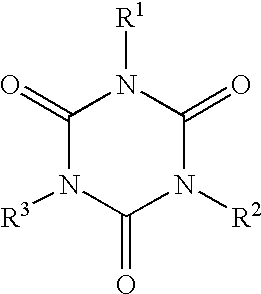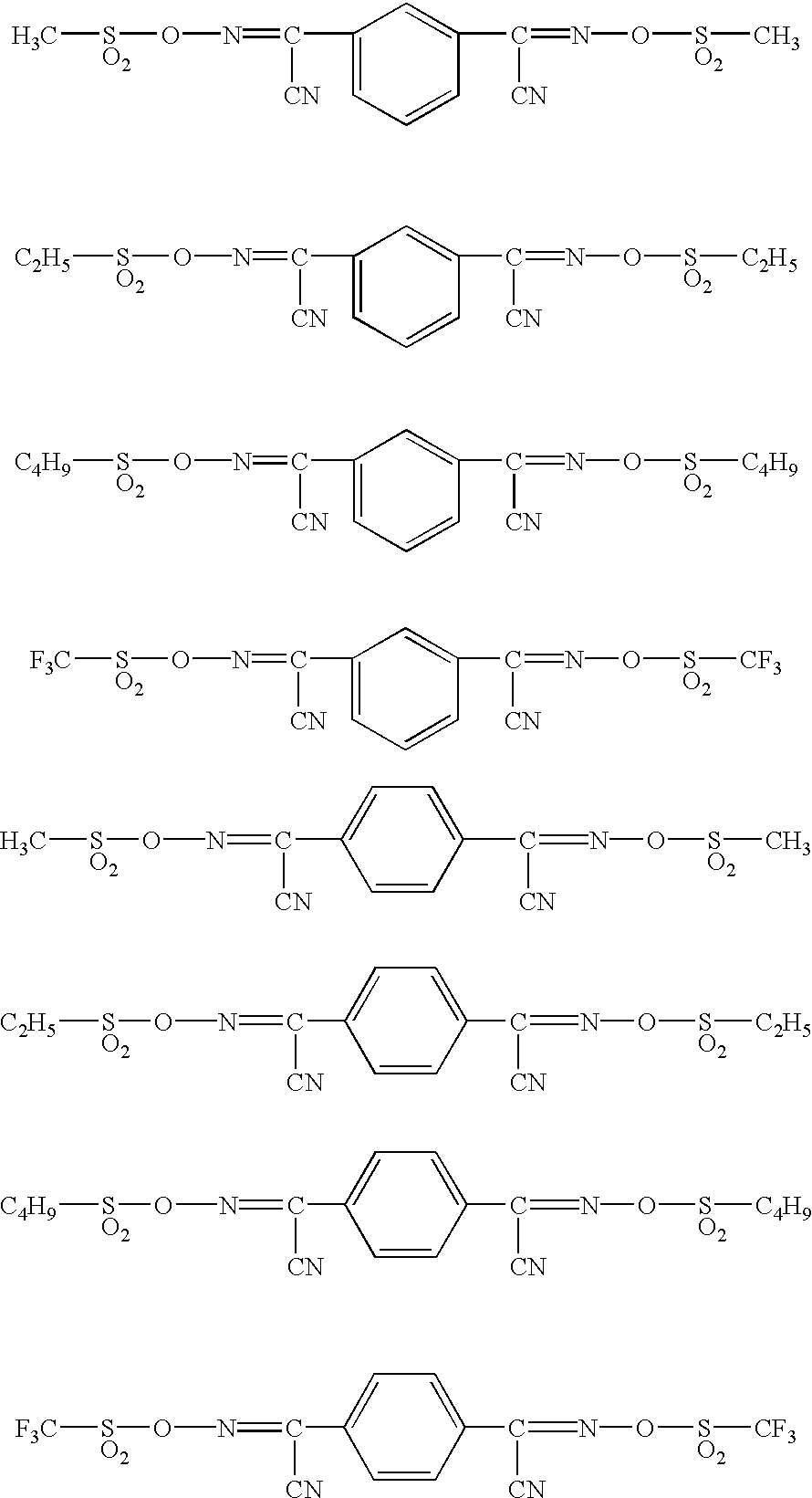Chemically amplified negative photoresist composition for the formation of thick films, photoresist base material and method of forming bumps using the same
a technology of photoresist composition and thick film, which is applied in the direction of photosensitive materials, instruments, photomechanical equipment, etc., can solve the problems of deteriorating compatibility or stability in preservation, exhibiting required plating resistance, etc., and achieve satisfactory plating resistance and high sensitivity
- Summary
- Abstract
- Description
- Claims
- Application Information
AI Technical Summary
Benefits of technology
Problems solved by technology
Method used
Image
Examples
preparation example 1
Sixty parts of m-cresol was added to forty parts of p-cresol, the resulting mixture was condensed with formaldehyde (as formalin) using an oxalic acid catalyst according to a conventional procedure and thereby yielded a cresol novolak resin. Low molecular weight fractions of the resin were removed by fractionation to yield a novolak resin having a weight average molecular weight of 10000 (Novolak Resin A1).
preparation example 2
Formaldehyde was added to m-cresol, the resulting mixture was condensed using an oxalic acid catalyst according to a conventional procedure and thereby yielded a m-cresol novolak resin. Low molecular weight fractions of the resin were removed by fractionation to yield a novolak resin having a weight average molecular weight of 6000 (Novolak Resin A2).
example 1
In 150 parts of propylene glycol methyl ether acetate were dissolved 90 parts of Novolak Resin A1 (a1), 10 parts of a homopolymer of hydroxystyrene (a2) having a weight average molecular weight of 2500 (available from Nippon Soda Co., Ltd. under the trade name of UP-2500), 0.5 part of an acid generator (B) represented by the following formula, and 10 parts of hexamethoxymethylated melamine (available from Sanwa Chemical Co., Ltd. under the trade name of Nikalac Mw-100) as a crosslinking agent (C), the resulting solution was filtrated through a membrane filter having a pore size of 1.0 μm and thereby yielded a negative photoresist composition. The properties of this composition were determined according to procedures mentioned later. The results are shown in Table 1.
PUM
 Login to View More
Login to View More Abstract
Description
Claims
Application Information
 Login to View More
Login to View More - R&D
- Intellectual Property
- Life Sciences
- Materials
- Tech Scout
- Unparalleled Data Quality
- Higher Quality Content
- 60% Fewer Hallucinations
Browse by: Latest US Patents, China's latest patents, Technical Efficacy Thesaurus, Application Domain, Technology Topic, Popular Technical Reports.
© 2025 PatSnap. All rights reserved.Legal|Privacy policy|Modern Slavery Act Transparency Statement|Sitemap|About US| Contact US: help@patsnap.com



